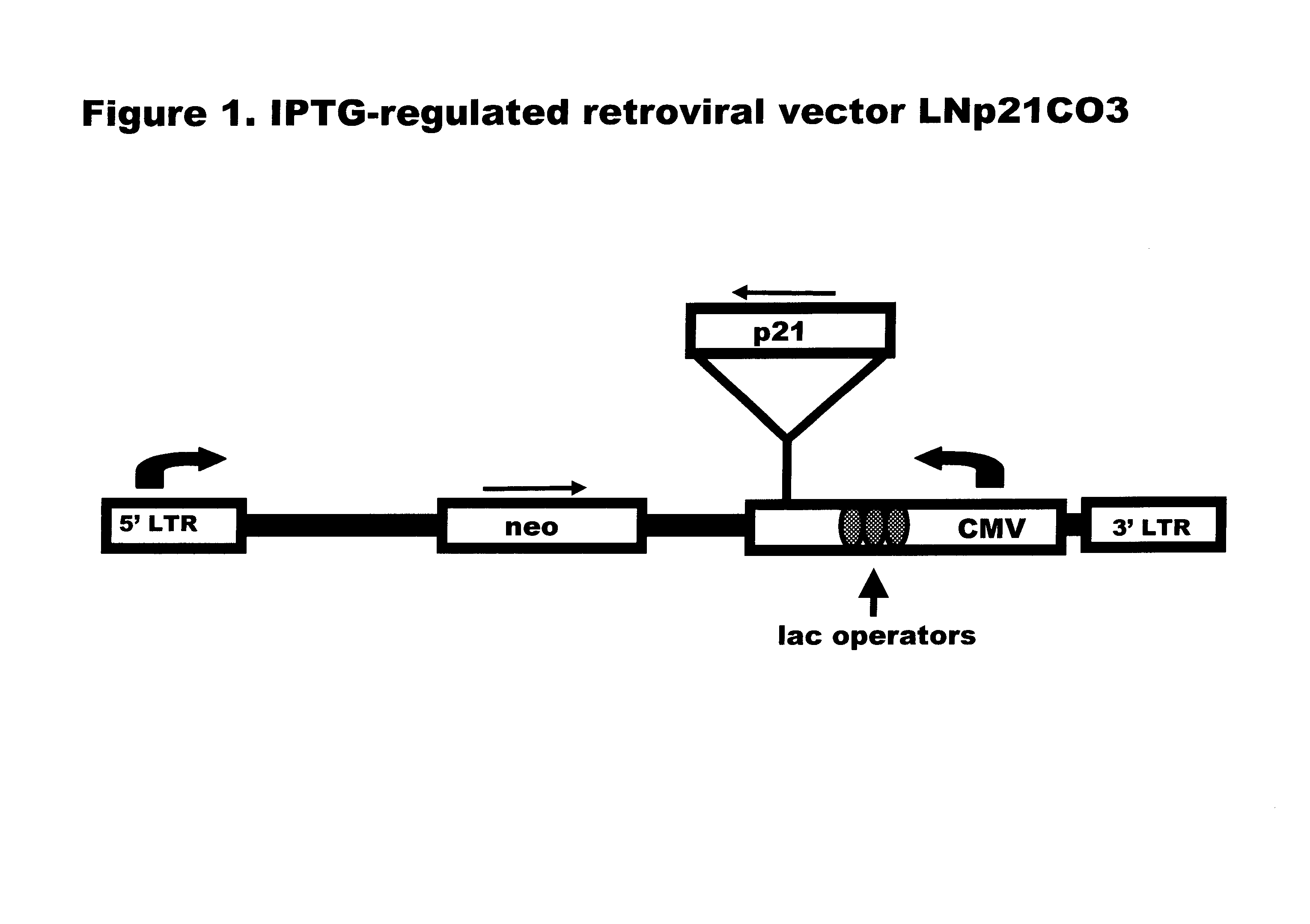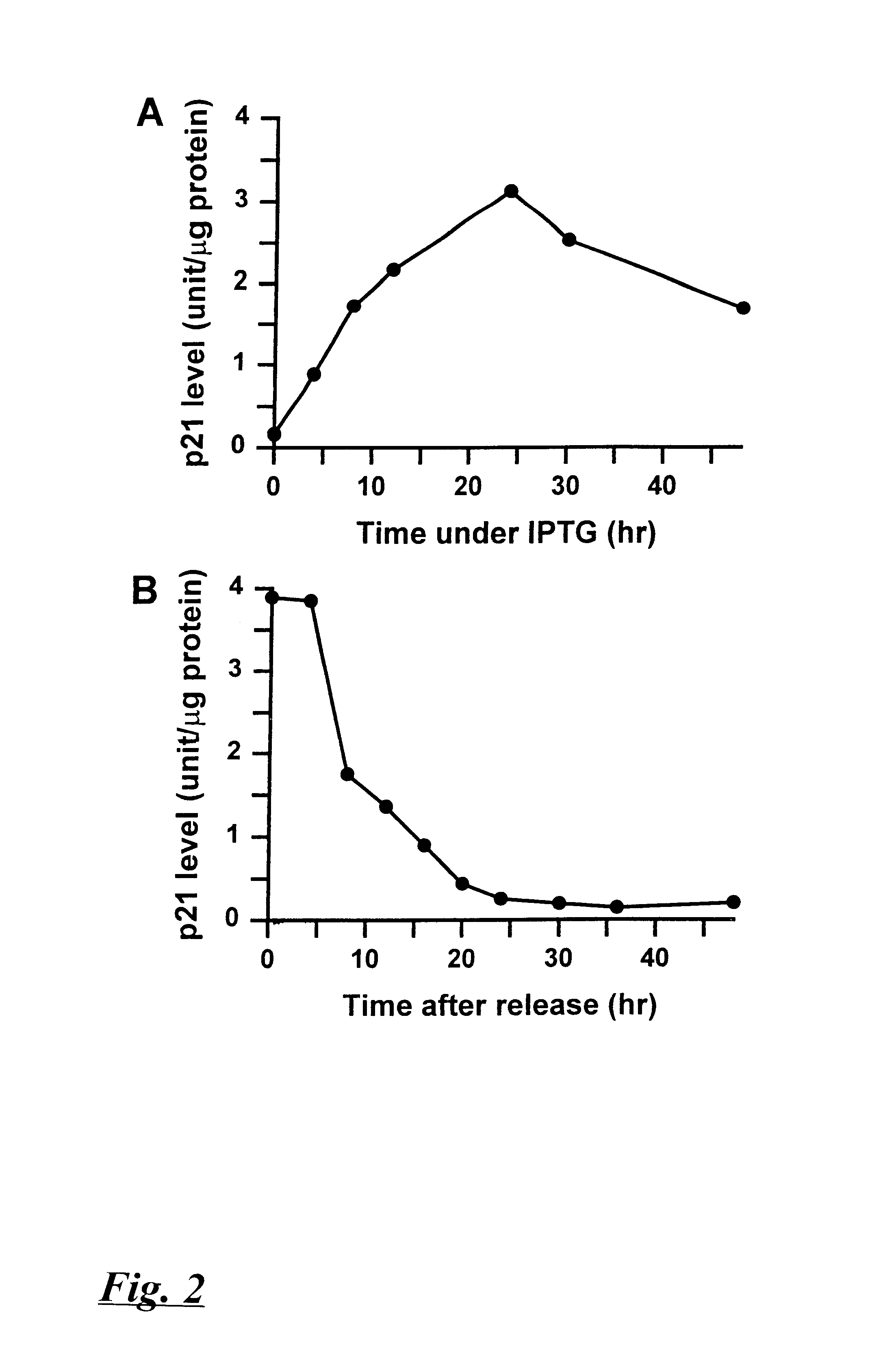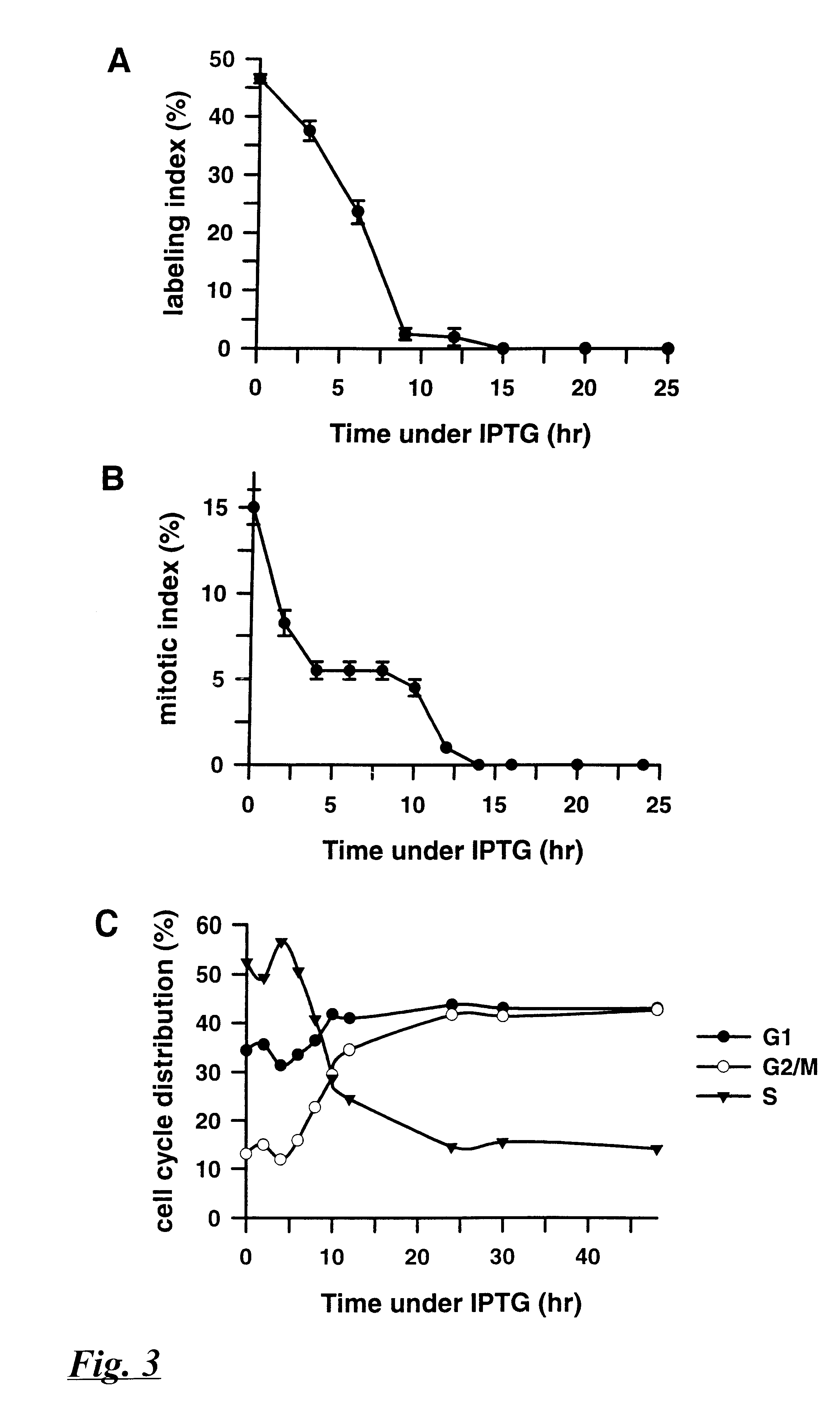Reagents and methods for identifying and modulating expression of genes regulated by p21
a technology of p21 and gene expression, applied in the field of p21-induced growth arrest recovery cells, can solve the problems of overall genetic instability of such cells, abnormal replication and abnormal mitosis, and increase the frequency of mutations in cells that recover from p21-induced growth arres
- Summary
- Abstract
- Description
- Claims
- Application Information
AI Technical Summary
Benefits of technology
Problems solved by technology
Method used
Image
Examples
example 2
Cell Growth Assays
p21-9 cells produced as described in Example 1 were used in cell growth assays to determine what changes in cell growth occurred when p21 was expressed in the cell.
p21 expression from the LNp21CO3 vector in p21-9 cells was induced by culturing the cells in DMEM medium containing 10% fetal calf serum (Hyclone, Logan, Utah) and IPTG. Results of these assays are shown in FIGS. 2A and 2B. FIG. 2A shows the time course of p21 protein production in cells cultured in the presence of 50 .mu.M IPTG. p21 gene expression increased between 6 and 12 hours after introduction of IPTG into the growth media, which expression peaked at about 24 hours post-induction. Upon removing the cells from IPTG-containing media, p21 expression fell about as rapidly as it had risen, returning to pre-induction levels at about 24 hours after IPTG was removed, (FIG. 2B).
Cell growth in the presence of IPTG was assayed in three ways: measuring .sup.3 H-thymidine incorporation (termed the "labeling in...
example 3
Analysis of Gene Expression Modulated by p21 Gene Expression
The results disclosed in Example 3 suggested that the morphological and cell cycle consequences of p21 induction could be the result of repression of genes that control cell cycle progression. The effects of p21 induction on cellular gene expression were examined as follows.
Reverse transcription-polymerase chain reaction (RT-PCR) analysis was performed to investigate expression of genes known to be involved in the control of cell cycle checkpoint progression. Preliminary RT-PCR analysis of 27 genes involved in cell cycle control and DNA replication revealed that eight of these genes were inhibited by IPTG in p21-9 cells. Total RNA was extracted from p21-9 cells collected at different time points during IPTG treatment and release. RT-PCR analysis of changes in gene expression for downregulated genes was carried out essentially as described by Noonan et al. (1990, Proc. Natl. Acad. Sci. USA 87: 7160-7164).
A more comprehensive...
example 4
Identifying the Specificity of p21 Induction by Comparing IPTG-treated and Serum-Starved p21-9 Cells
The identity of p21-induced changes in cellular gene expression that are likely to be a consequence of cell growth arrest was determined as follows. Analogous experiments were performed using a truncated form of p21 (comprising amino acids 1-90) and identical results were obtained.
Growth arrest (quiescence) was induced in p21-9 cells by serum starvation produced by culturing the cells in serum-free media for 4 days. In serum-starved cells, unlike IPTG-treated p21-9 cells, the cells did not develop a senescent morphology and showed only very weak SA-.beta.-gal expression. p21 levels in serum-starved cells were increased only about 2-fold, as opposed to the 15-20 fold increase seen in IPTG-treated cells. FIG. 9 shows RT-PCR analysis performed as described above of the expression of a group of p21-inhibited and p21-induced genes in p21-9 cells that were growth- arrested after 4 days in s...
PUM
| Property | Measurement | Unit |
|---|---|---|
| time | aaaaa | aaaaa |
| multidrug resistance | aaaaa | aaaaa |
| fluorescent | aaaaa | aaaaa |
Abstract
Description
Claims
Application Information
 Login to View More
Login to View More - R&D
- Intellectual Property
- Life Sciences
- Materials
- Tech Scout
- Unparalleled Data Quality
- Higher Quality Content
- 60% Fewer Hallucinations
Browse by: Latest US Patents, China's latest patents, Technical Efficacy Thesaurus, Application Domain, Technology Topic, Popular Technical Reports.
© 2025 PatSnap. All rights reserved.Legal|Privacy policy|Modern Slavery Act Transparency Statement|Sitemap|About US| Contact US: help@patsnap.com



